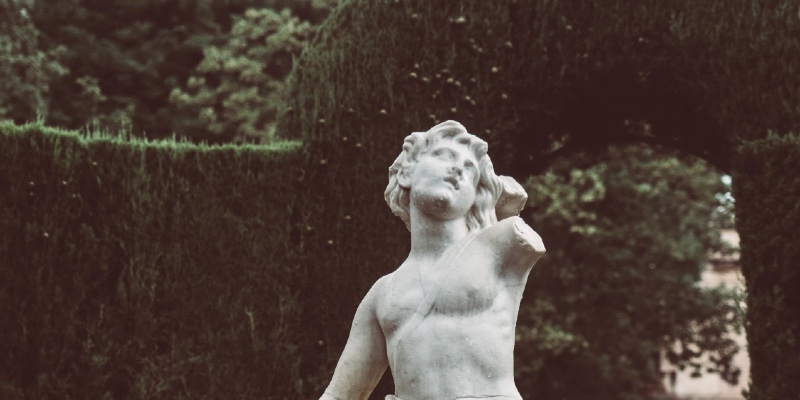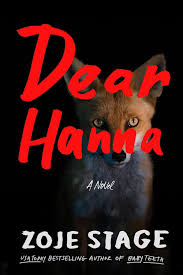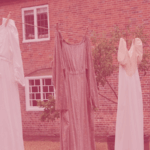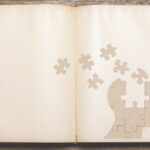Prior to writing novels I’d spent decades dreaming of being a filmmaker—specifically, a writer/director of more indie-type films. After watching thousands of movies, and writing nearly fifty screenplays, I had a strong vision of the kinds of films I wanted to make. And then a number of years ago, due to life circumstances, I refocused my creative efforts into writing novels. When I made that transition, I brought with me a wealth of influential experiences and creative goals, and perhaps it was inevitable that the types of novels I wanted to write reflected the kinds of films I’d once hoped to make: realistic, character-driven stories in which something odd is happening.
I sometimes suspect that I use the term “realism” differently than many people. And I’m pretty sure this comes from my background of watching documentaries, European films, and cinema-verité. As part of my goal of being a competent director, I also became a theatrically-trained actor, and things I learned and observed about acting became important to how I build characters and develop stories. Way back when, I had an Aha! moment—and suddenly understood that one of the big differences between European cinema and Hollywood had to do with the portrayal of characters, i.e. acting. In my observation, European and Scandinavian characters were more likely to act like real, unpredictable people, whereas in Hollywood the characters were more likely to behave like people in other mainstream movies.
This difference in acting styles isn’t strictly a matter of acting, though—it’s also the result of how a film is written and directed. Then, as I read more commercial fiction, I started to see many instances where characters in novels were behaving like…characters in other novels. This may be the norm, and even expected for certain genres—and seeing characters react as you expect them to can be satisfying as a reader. But, given my influences, I was always more interested in exploring “How would a real person behave in this situation?” So when I started writing novels I thought very consciously about “directing” my characters as if they were real people.
An instance of this in my own writing is Orla in Wonderland. Orla is a grounded person who doesn’t believe in religion or the supernatural, so when she finds herself in the midst of an inexplicable situation, she does everything possible to rationalize and ground it in the real world. It’s not lost on me that some readers find this maddening—Why can’t Orla open her eyes and get with the program? But one of the things I’ve learned about human beings is they can be slow to fully accept a reality that’s right in front of them.
In my novel Getaway, the three women struggle to believe that the man they encounter is as dangerous as he actually is. His level of menace is far-removed from their personal experience, and to some degree we all project our modes of being onto those around us, and then expect them to behave accordingly. This exploration of “normal” behavior was central in my creation of Hanna, who started out as a seven-year-old in Baby Teeth and is now a twenty-four-year-old in Dear Hanna.
It was important to me that child-Hanna wasn’t just an entertaining “bad seed,” but a complex person whose actions stemmed logically from her misperceptions of the world. Equally important to me was that Baby Teeth is intrinsically a story about imperfect parents who ultimately have to deal with their child’s mental illness. And now, with Dear Hanna, my effort was to avoid creating a monster—sociopath is not a synonym for serial killer—but a person with a profoundly different manner of being who struggles to live a normal life. My fundamental interest in telling stories is to explore how a specific character will react in their odd situation, while keeping them tethered to the psychological realities of being a real human.
There are a couple of powerful, formative examples that illustrated for me how real people behave differently from fictitious people. In the documentary film Deliver Us From Evil a married couple recount their history with their local priest. We, as the audience, already know the film is about an unrepentant pedophile priest, but the parents start their story from the beginning, when they thought everything was good. They recounted happy times, and laughed and smiled as they did so. I was acutely aware, as a trained actor, that if interpreted as a monologue, someone might perform the mother’s or father’s speech in a state of teary-eyed distress—because of what was to come.
It was especially remarkable to observe the father, who had been an extremely religious man and felt honored by this priest’s attention to his family. Those remained good memories as he recalled them—no drama, no Sturm and Drang. And then he got to the moment when he recounted finding out that his young daughter had been raped. He abruptly threw his head back and wept—keening as if he was being tortured—and cried out, “There is no God!”
Stepping back from this to study it as a powerful human reaction, one comes to see that part of what made it so startling was the juxtaposition—from sanguine, to devastated. And this specific sort of juxtaposition was something I’d been exposed to, and encouraged to explore, in an acting class: sometimes the unexpected reaction is more interesting, and ultimately more truthful, than playing to expectations.
Going back even further, there is the indelible memory of watching a show on PBS about the eruption of Mt. Pinatubo (I think it was an episode of Nova). There’s an astonishing shot in the documentary where a bunch of scientists are crowded in a car, trying to outrace a pyroclastic flow. The imagery was awesome: a huge billow of ash and smoke, cascading behind them, chasing the car as they tried to reach safety. My filmmaker-self knew even then how this scene would be depicted in a mainstream film: there’d be dialogue of the scientists screaming, urging the driver to go faster.
What happened in real life was one of the scientists glanced through the back window and saw the cataclysm bearing down on them. Realizing that it looked like a scene from a big budget action film, he turned to his fellow scientists and asked if anyone had brought the popcorn. The moment had been so intense—true suspense, these lives were in real peril—and the attempt at a joke left me nearly crying as I laughed. The images of the pyroclastic flow and the laughing scientists—the juxtaposition of heightened emotions—imprinted itself in my mind. And solidified for me that real people are the best. Real people are vulnerable and unpredictable and selfish and wounded and funny and confused and hopeful.
All of this speaks to one aspect of how I approach creating characters. (The other aspect involves how I became interested in good and evil, but that’s another essay). These experiences created essential building blocks for how I understand both people and the depictions of people in films and novels. I endeavor to write realism even though my work lies within the horror and thriller genres. Most of my books are a progression toward a moment when a character has to accept the reality in front of them, and I label all my novels “psychological” because of the internal process behind these transformations.
Fiction exists as a mirror to our world—perhaps enhanced in certain ways—but still with the intention of showing us some level of our own societal or psychological makeup. And at the end of the day, aren’t all the best genre stories grounded in reality?
***


















